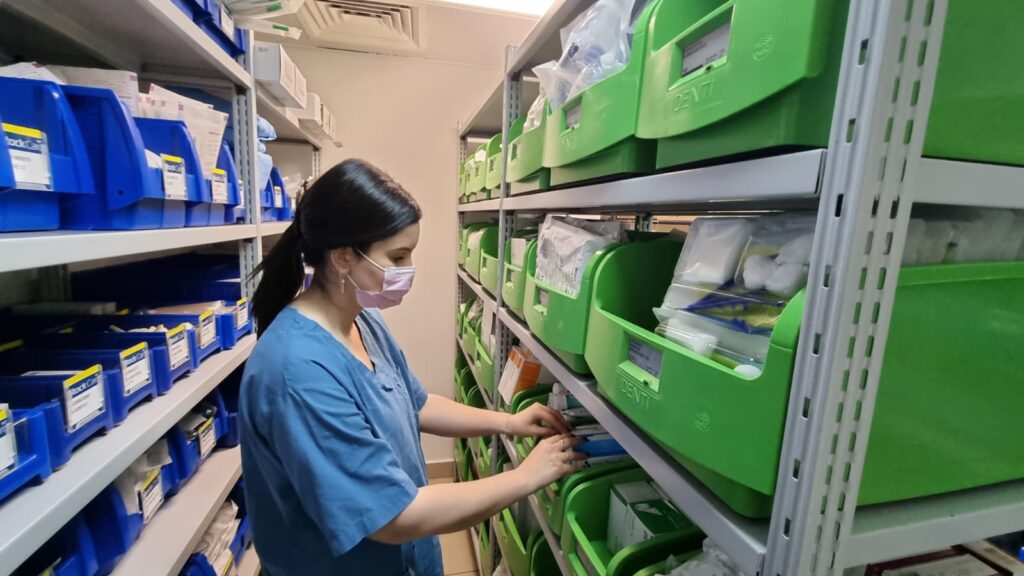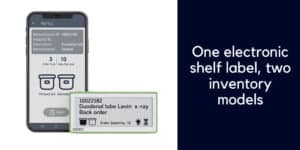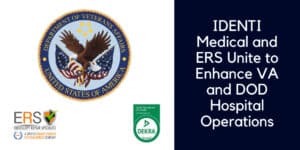What’s inside:
This blog explores medical inventory tracking in the med surg setting and highlights the benefits of automated supply management:
Read about:
- Manual Med Surg Inventory Management Challenges
- The Benefits of Automated Supply Management
- Case Study Findings
- Cost Savings
How can you optimize your bulk supply inventory in medical surgical areas? Getting medical inventory tracking right in med surg settings is a crucial element of high-quality patient care. Clinical teams treat a wide variety of medical conditions and injuries and need to have a diverse range of supplies on hand.
Effective medical inventory tracking is central to the efficient replenishment of supplies. It involves the constant checking and counting of supplies in order to keep track of usage and organize timely restocks. Any disruption in supply availability will result in nurses spending time talking to materials management or rushing around trying to borrow stock from other departments, and ultimately they cannot delivery timely, high quality care without the right supplies at hand.
So, how can healthcare providers improve medical inventory tracking in Med Surg settings?
The Problem with Manual Medical Inventory Tracking
Many med surg areas are manually managed, leading to erratic supply availability, such as excess inventory, product shortages, and stock-outs. In addition, managing med surg supply rooms across all hospital facilities is both time consuming and labor-intensive for the logistics team, as well as the nurses who need to get involved.
Relying on manual Kanban and PAR systems for medical inventory tracking means that frequent manual stock-level checks are required. With so many med surg supply rooms across the whole healthcare organization, these stock checks take time to perform and are mostly based on ‘eyeballing’ rather than counting, which increases the risk of errors.
” When ‘best guess’ data is used to inform purchasing, it creates a cycle of bad practice, with bad data leading to two bad extremes – excess inventory and stockouts. “
Kanban & PAR Automation Technology
Automated medical inventory tracking systems offer an effective solution that streamlines medical inventory management processes.
There are different levels of Kanban and PAR automation:
- Weight-based systems are used for PAR-level management and can track stock levels in real time. They automatically trigger replenishment orders for each SKU when its order point is reached. Next-generation weight-based systems have transitioned from bulky units to wireless bins.
- Digital tags are used for Kanban management. Some tags are literally just digital displays but there are also more sophisticated digital Kanban tags that just require press-button action as a demand signal, a task that can be actioned by nurses or logistics staff, and ensures prompt restocks.
- Scannable RFID tags are a simple system using RFID technology. A mobile hand scanner can be used to scan each bin and order management or replenishment notification can be actioned via the mobile app.
The best smart Kanban and PAR hardware is managed by AI software, providing powerful data processing, analytics and predictive capabilities.
Automation minimizes the manual labor involved in supply chain management and ensures medical inventory tracking is timely and accurate.
Enhanced data quality all the operational workflows required will be far more efficient, ensuring the right supplies arrive before stocks run low, supporting high quality patient care.
Cost Benefits of Medical Inventory Tracking
Implementing automated Kanban and PAR systems in med surg and other supply areas across the healthcare facility is not just about replenishment optimization. Another key reason that healthcare providers are looking to automate medical inventory tracking is that it can deliver significant cost savings.
When timely, accurate data feeds into the system, timely replenishment prevents premium last-minute orders, and reduces the storage costs and wastage associated with obsolete items and excess stock.

Check out our case study on the impact of a hybrid Kanban & PAR inventory management system introduced on an inpatient ward in a busy hospital.
Pilot Findings include:
- 50% reduction in logistics time spent on the ward.
- Nurse satisfaction increased from 53% to 90%
- Time spent by nurses on supply orders reduced to ZERO

The Free Flow of Supply Chain Data
Automated supply management systems provide valuable data insights for management, enabling the identification of areas of inefficiency, and better, more informed decision-making.
Data doesn’t just help with the operational realities of today, predictive analytics is able to deliver meaningful forecasts that help supply chain planning.
Medical inventory tracking in med surg areas can be enhanced by the use of Kanban and PAR automation tools which reduce the labor involved in managing the inventory, bring costs down, and ensure prompt replenishment for better quality patient care.
Find out about medical inventory tracking solutions for the med surg setting.






